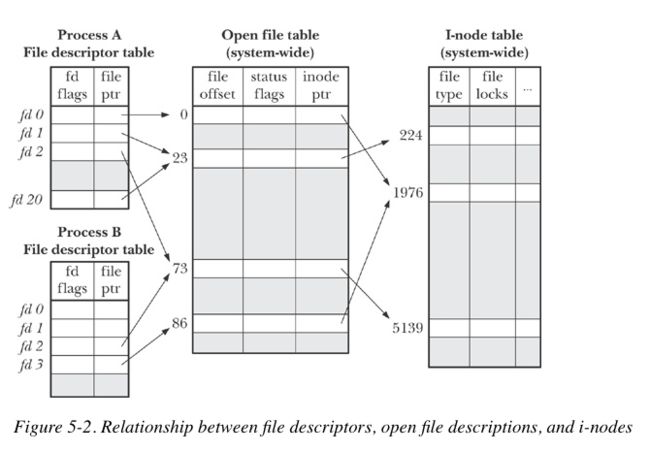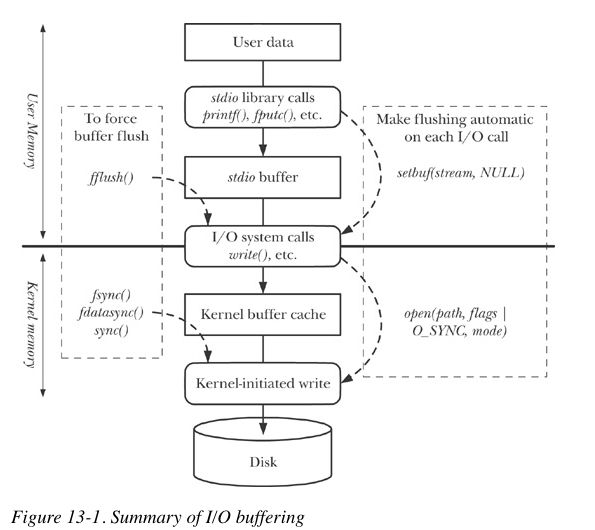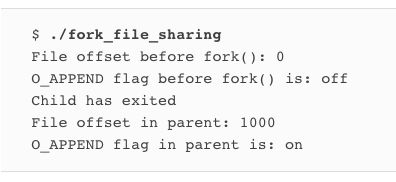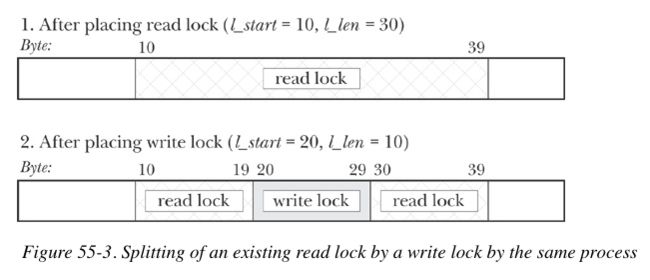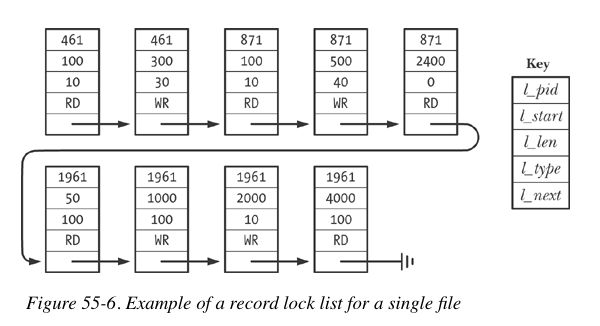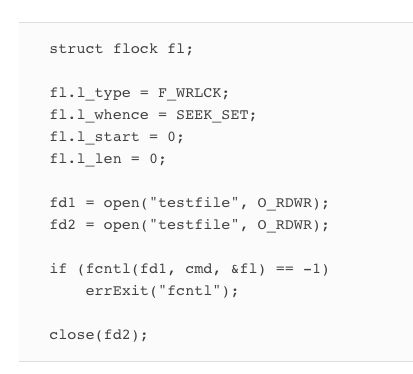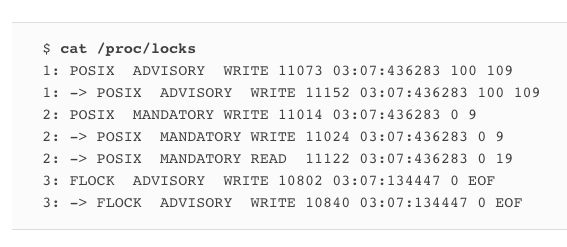- HIVE的权限控制和超级管理员的实现
weixin_34364071
大数据数据库java
Hive用户权限管理从remote部署hive和mysql元数据表字典看,已经明确hive是通过存储在元数据中的信息来管理用户权限。现在重点是Hive怎么管理用户权限。首先要回答的是用户是怎么来的,发现hive有创建角色的命令,但没有创建用户的命令,显然Hive的用户不是在mysql中创建的。在回答这个问题之前,先初步了解下Hive的权限管理机制。Hive用户组和用户即Linux用户组和用户,和h
- Linux性能优化CPU篇之平均负载
linux
首先使用uptime命令查看对应平均负载.平均负载是指单位时间内,系统处于可运行状态和不可中断状态进程数所谓的可运行状态的进程是指,正在使用CPU或者正在等待的CPU进程数量,也就是我们常用的ps命令,处于R状态。不可中断状态的进程是正在处于内核关键流程中的进程,注意这些进程不可以被打断的,当我们向一个磁盘写入一个文件的时候,它是不可以被打断的。那么平均复杂怎么样才算好呢?平均负载最理想的情况是等
- Linux 系统性能调优
周盛欢
linux运维服务器
嘿,朋友们,今天咱们来唠唠Linux系统性能调优这事儿。你是不是觉得这听起来特高大上、特复杂?别担心,我保证用最简单的语言,让你这个0基础的小伙伴也能轻松入门。一、为啥要调优Linux性能想象一下,你的电脑突然变卡了,打开个软件都得等半天,是不是特别闹心?Linux系统也一样,用着用着可能会因为各种原因变慢。比如,服务器上用户越来越多,要是不调优,系统就可能扛不住,影响大家正常用。所以,性能调优就
- Centos7.6离线安装软件
PascalMing
LinuxCentosyumntp离线安装
在离线情况下,安装Centos软件,有几个方法1、直接下载离线软件包如果能直接下载离线软件包,是最省事的方法,可以直接baidu查找试试,或到下面这个网址试试:PackagesforLinuxandUnix-pkgs.orgUbuntu各版本的软件比较齐全,下载后直接安装即可由于Centos目前逐步停止支持,导致不少安装包不容易找到,可以试试第2种方法2、使用yum的离线包下载功能yum将一个包下
- 蓝易云 - Linux系统中常见的远程管理协议!
蓝易云
linux运维服务器httpnginxhttpsflutter
Linux系统中常见的远程管理协议有以下几种:1.SSH(SecureShell):SSH是一种安全的远程登录协议,用于在网络上安全地远程登录到Linux服务器。它提供了加密的传输和身份验证机制,可以防止数据在传输过程中被拦截和篡改。SSH使用用户名和密码或公钥认证来验证用户身份,并允许用户在远程终端上执行命令。2.Telnet:Telnet是一种不安全的远程登录协议,用于在网络上远程登录到Lin
- 【linux】看门狗&喂狗的简述
乔峰不是张无忌330
linux汽车电子linux汽车车载系统
看门狗的功能作用“看门狗定时器”,从功能上说它可以让微控制器在意外状况下(比如软件陷入死循环)重新回复到系统上电状态,以保证系统出问题的时候重启一次。“看门狗”就是一个计数器,由于位数有限计数器能够装的数值是有限的(比如8位的最多装256个数、16位的最多装65536个数),从开启“看门狗”那刻起,它就开始不停的数机器周期,数一个机器周期就计数器加1,加到计数器盛不下了(术语叫溢出)就就产生一个复
- 利用代理模式实现日志功能
郭亚航
java框架代理日志输出
场景实现一个类,该类实现了数学四则运算,实现日志功能,每次调用对应的运算时,输出相应的日志基本功能接口packagecom.javase.thread;publicinterfaceArithmetic{publicintadd(inti,intj);publicintsub(inti,intj);publicintmul(inti,intj);publicintdiv(inti,intj);}接
- 【VMware创建虚拟机+安装Ubuntu22】
2301_81475776
java服务器linux
使用VMware创建虚拟机并安装Ubuntu22创建虚拟机Ubuntu安装创建虚拟机1.打开下载好的VMware,点击主页中的"创建新的虚拟机“2.弹出窗口,选择“自定义”选项,点击下一步3.弹出窗口,选择所需要的”硬件兼容性“,点击下一步4.弹出窗口,选择”稍后安装操作系统“,点击下一步5.弹出窗口,客户机系统操作选择"Linux",版本选择“Ubuntu64”6.修改虚拟机名称7.选择虚拟
- ubuntu 22 安装vmware 17.5
bohu83
ubuntulinuxvmwarevmmonvmnet
因为玩小车,亚博售后说目前技术不支持搭建移植环境,推荐使用官方的虚拟机镜像。ubuntu安装linux,下载,推荐CDSRepository-/var/www/public/stage/session-120/cds/vmw-desktop/ws/17.5.1/23298084/linux/core官方网站brandcom注册很麻烦,貌似有bug,我注册完还提示登录失败。准备工作sudoaptin
- 从CentOS到龙蜥:企业级Linux迁移实践记录(龙蜥开局)
名为逗比
linuxcentos运维
引言:在我们之前的文章中,我们详细探讨了从CentOS迁移到龙蜥操作系统的基本过程和考虑因素。今天,我们将继续这个系列,重点关注龙蜥系统的实际应用——特别是常用软件的安装和配置。龙蜥操作系统(OpenAnolis)作为一个强大的企业级Linux发行版,不仅提供了稳定的基础环境,还支持广泛的软件生态系统。对于从CentOS迁移过来的用户来说,了解如何在龙蜥上安装和管理常用软件是确保平稳过渡的关键步骤
- 构建复杂UI布局的策略与实践
QT性能优化QT原理源码QT界面美化
qtqt6.3qt5QT教程c++
构建复杂UI布局的策略与实践补天云火鸟博客创作软件补天云网站1QT_Widgets与复杂UI布局概述1.1QT_Widgets基础及其在UI设计中的作用1.1.1QT_Widgets基础及其在UI设计中的作用QT_Widgets基础及其在UI设计中的作用构建复杂UI布局的策略与实践,QtWidgets基础及其在UI设计中的作用在软件开发领域,尤其是用户界面(UserInterface,UI)设计中
- 电商平台的API接口创新:开启智能化新时代
FB13713612741
人工智能python爬虫oneapi
在当今数字化驱动的商业世界中,电商平台正以前所未有的速度蓬勃发展,成为经济增长的重要引擎。而在这一繁荣景象的背后,API接口(ApplicationProgrammingInterface,应用程序编程接口)的创新扮演着至关重要的角色。它们不仅为电商业务的高效运行和持续创新提供了坚实的支撑,更是开启智能化新时代的关键力量。一、API接口在电商平台中的基础作用API接口是一种定义和程序间交互的协议和
- MySQL备份案例: mysqldump+binlog实现完全+增量备份
糯米汤圆~
mysql数据库运维linux
一、素材准备1.创建一个干净环境的虚拟机--192.168.46.120openEuler22.linux在线安装MySQLa.查看本地MySQL安装列表,选择安装版本[root@openEuler~]#yumlist|grep-i"^mysql"mysql.src8.0.40-1.oe2203sp4update-sourcemysql.x86_648.0.40-1.oe2203sp4update
- keepalived 、HAProxy
www.农民工
智能路由器网络
KeepAlived高可用集群配置高可用的web集群监控本机80端口,实现主备切换实现原理实施配置高可用、负载均衡的web集群配置高可用、负载均衡HAProxy配置haproxy负载均衡调度器比较LVS(LinuxVirtualServer)NginxHAProxyday02KeepAlived高可用集群配置高可用的web集群监控本机80端口,实现主备切换实现原理实施配置高可用、负载均衡的web集
- Linux系统之配置Nginx负载均衡
江湖有缘
Linux技术学习linuxnginx负载均衡
Linux系统之配置Nginx负载均衡一、Nginx介绍1.1Nginx简介1.2Nginx反向代理1.3相关概念二、本次实践介绍2.1本次实践简介2.2本次实践环境规划三、部署两台web服务器3.1运行两个Docker容器3.2编辑测试文件四、配置负载均衡4.1安装nginx软件4.2编辑nginx配置文件4.3启动Nginx服务4.4检查Nginx服务状态4.5设置防火墙和selinux4.6
- 在Linux系统中无网络安装Nginx并配置负载均衡
LensonYuan
项目发布linux网络nginx
在Linux系统中无网络安装Nginx并配置负载均衡在现代的Web开发和运维中,Nginx作为一个高性能的HTTP和反向代理服务器,被广泛应用于负载均衡、静态资源服务、SSL终端等场景。然而,在某些特殊环境下,服务器可能无法访问互联网,这就需要在无网络的情况下手动安装和配置Nginx。本文将详细介绍如何在Linux系统中无网络安装Nginx,并通过Nginx实现负载均衡。1.环境准备在开始安装之前
- 【Rust】——不安全Rust
Y小夜
Rust(官方文档重点总结)rust开发语言后端
博主现有专栏:C51单片机(STC89C516),c语言,c++,离散数学,算法设计与分析,数据结构,Python,Java基础,MySQL,linux,基于HTML5的网页设计及应用,Rust(官方文档重点总结),jQuery,前端vue.js,Javaweb开发,Python机器学习等主页链接:Y小夜-CSDN博客目录不安全的超能力解引用裸指针调用不安全函数或方法创建不安全代码的安全抽象使用e
- 一文搞定postgreSQL
m0_74825172
java
一文搞定postgreSQLPostgreSQL全面指南一、什么是PostgreSQL?二、PostgreSQL的核心概念三、安装PostgreSQL1.在Linux上安装(例如Ubuntu)2.在macOS上安装(使用Homebrew)3.在Windows上安装四、基本操作1.启动和停止PostgreSQL服务2.连接到PostgreSQL3.创建数据库和用户4.基本SQL操作五、高级功能1.事
- linux安装卸载软件
int8
linuxlinux运维服务器
一、首先要清楚几个概念(一)归档:归档是把多个文件合并成一个文件的过程。生成的文件称为归档包。归档包带后缀名。不同的归档程序,生成的归档包的后缀名不同。(二)压缩:压缩是把一个大文件变成一个小文件的过程。生成的文件称为压缩包。压缩包名带后缀名。不同的压缩程序,生成的压缩包的后缀名不同。(三)归档压缩程序仅归档ar:archiver。后缀名为.a,.arTar:TapeArchive。通过Tar归档
- Linux内核性能调优:让系统飞起来的秘籍
深度Linux
性能优化linuxLInux内核c++
在当今数字化时代,Linux系统凭借其强大的稳定性、开放性和灵活性,广泛应用于服务器、云计算、大数据等诸多领域。然而,随着业务量的不断增长和应用场景的日益复杂,Linux内核的性能面临着巨大挑战。哪怕是微小的性能瓶颈,都可能像滚雪球一样,在高负载运行时被无限放大,进而引发一系列严重问题。想象一下,一个电商网站在购物高峰期,由于Linux内核性能不佳,导致服务器响应迟缓。用户点击商品详情,页面却迟迟
- 从零创建一个 Django 项目
m0_74825172
djangopython后端
1.准备环境在开始之前,确保你的开发环境满足以下要求:安装了Python(推荐3.8或更高版本)。安装pip包管理工具。如果要使用MySQL或PostgreSQL,确保对应的数据库已安装。创建虚拟环境在项目目录中创建并激活虚拟环境,保证项目依赖隔离:#创建虚拟环境python-mvenvenv#激活虚拟环境#WindowsenvScriptsactivate#Linux/Macsourceenv/
- iOS 保持界面流畅的技巧
风雨「83」
iOSiosobjective-cxcode
一个非常经典的帖子,适合iOS中高级https://blog.ibireme.com/2015/11/12/smooth_user_interfaces_for_ios/
- linux tcp_nodelay,仔细看参数--NGINX之tcp_nodelay
投机启示录
linuxtcp_nodelay
一、知识准备●在nginx优化中有个经常需要设置的参数,tcp_nodelay●该参数最核心的功能,就是把小包组成成大包,提高带宽利用率也就是著名的nagle算法●tcp协议中,有一个现象:应用层数据可能很低(比如1个字节),而传输层开销有40字节(20字节的IP头+20字节的TCP头)。这种情况下大部分都是控制包的传输,既加大了带宽的消耗,带宽利用率也不高●nagle算法就是为了解决这个问题。在
- linux 监控 开源软件,利用开源软件打造Linux应用软件平台之监控子系统
呆呆小逗比
linux监控开源软件
它山之石,可以攻玉。监控子系统是每一个高级应用软件平台必不可少的一个子系统,这个子系统应具备的基本功能包括:各进程的运行状态,系统资源的占用状况,重要配置文件的改变情况,重要目录的异动,常用服务的对外提供情况等。一种可行的实现方法是自己写一大堆的脚本,然后加入crond服务去定时做这些监控,另一条捷径是利用开源软件Monit。本文介绍如何利用Monit去快速构建一个具备上述功能的软件平台的监控子系
- inotifywait监听php,用inotifywait监视文件变化并执行相应脚本
函明
Inotify是一个Linux特性,它监控文件系统操作,比如读取、写入和创建。Inotify反应灵敏,用法非常简单,并且比cron任务的繁忙轮询高效得多。在内核2.6.13以上都可以使用。Inotify一种强大的、细粒度的、异步文件系统监控机制,它满足各种各样的文件监控需要,可以监控文件系统的访问属性、读写属性、权限属性、删除创建、移动等操作,也就是可以监控文件发生的一切变化。inotify-to
- linux服务器用amd,主力机从Intel换成AMD 32核锐龙 Linux之父:半年用下来感觉特好...
胡厨厨
linux服务器用amd
原标题:主力机从Intel换成AMD32核锐龙Linux之父:半年用下来感觉特好来源:快科技去年5月,在编译LinuxKernel5.7rc7的空当,Linux之父LinusTorvalds对主力电脑做了一次大调整,从i9-9900K升级为了AMD锐龙线程撕裂者3970X。8核到32核当然可以说是质变,而且Torvalds过去15年一直都是用Intel平台作开发。用了半年多Torvalds对AMD
- Linux系统文件与目录管理(1)
放错位的天才
操作系统数据库运维
文件与目录的操作在Linux系统的文件与目录的管理上,不外乎『显示属性』、『拷贝』、『删除文件』、『移动文件或目录』、『重命名』等常用操作,由于文件与目录的管理在Linux当中是很重要的,尤其是每个人自己家目录的数据也都需要管理,所以我们来谈一谈有关文件与目录的一些基础管理部分吧.◆ls显示目录或文件◆ls命令用来显示目标列表,在Linux系统中是使用率较高的命令.ls命令的输出信息可以进行彩色加
- linux出现bash: ./java: cannot execute binary file 问题的解决办法
w36680130
linux
linux出现bash:./java:cannotexecutebinaryfile问题的解决办法参考文章:(1)linux出现bash:./java:cannotexecutebinaryfile问题的解决办法(2)https://www.cnblogs.com/longshiyVip/p/4802339.html备忘一下。
- [Linux性能调优] 磁盘I/O队列调度策略
Linux小凯
linux运维服务器
傻瓜化说明简单地说,对于磁盘I/O,Linux提供了cfq,deadline和noop三种调度策略cfq:这个名字是CompleteFairnessQueueing的缩写,它是一个复杂的调度策略,按进程创建多个队列,试图保持对多个进程的公平(这就没考虑读操作和写操作的不同耗时)deadline:这个策略比较简单,只分了读和写两个队列(这显然会加速读取量比较大的系统),叫这个名字是内核为每个I/O操
- Android系统架构
jingling555
Androidandroid系统架构arm开发安卓
Android系统架构:Android系统架构是一个复杂的、分层的结构,旨在提供高度的灵活性和可扩展性。这个架构可以大致分为以下几个主要层次:LinuxKernel(Linux内核):Linux内核是Android系统的底层,提供了系统底层的硬件驱动程序支持,并管理了系统的资源。它包括了各种设备驱动程序(如显示驱动、音频驱动、键盘驱动、电源驱动等)、内存管理、网络管理、电源管理以及系统安全等功能。
- 数据采集高并发的架构应用
3golden
.net
问题的出发点:
最近公司为了发展需要,要扩大对用户的信息采集,每个用户的采集量估计约2W。如果用户量增加的话,将会大量照成采集量成3W倍的增长,但是又要满足日常业务需要,特别是指令要及时得到响应的频率次数远大于预期。
&n
- 不停止 MySQL 服务增加从库的两种方式
brotherlamp
linuxlinux视频linux资料linux教程linux自学
现在生产环境MySQL数据库是一主一从,由于业务量访问不断增大,故再增加一台从库。前提是不能影响线上业务使用,也就是说不能重启MySQL服务,为了避免出现其他情况,选择在网站访问量低峰期时间段操作。
一般在线增加从库有两种方式,一种是通过mysqldump备份主库,恢复到从库,mysqldump是逻辑备份,数据量大时,备份速度会很慢,锁表的时间也会很长。另一种是通过xtrabacku
- Quartz——SimpleTrigger触发器
eksliang
SimpleTriggerTriggerUtilsquartz
转载请出自出处:http://eksliang.iteye.com/blog/2208166 一.概述
SimpleTrigger触发器,当且仅需触发一次或者以固定时间间隔周期触发执行;
二.SimpleTrigger的构造函数
SimpleTrigger(String name, String group):通过该构造函数指定Trigger所属组和名称;
Simpl
- Informatica应用(1)
18289753290
sqlworkflowlookup组件Informatica
1.如果要在workflow中调用shell脚本有一个command组件,在里面设置shell的路径;调度wf可以右键出现schedule,现在用的是HP的tidal调度wf的执行。
2.designer里面的router类似于SSIS中的broadcast(多播组件);Reset_Workflow_Var:参数重置 (比如说我这个参数初始是1在workflow跑得过程中变成了3我要在结束时还要
- python 获取图片验证码中文字
酷的飞上天空
python
根据现成的开源项目 http://code.google.com/p/pytesser/改写
在window上用easy_install安装不上 看了下源码发现代码很少 于是就想自己改写一下
添加支持网络图片的直接解析
#coding:utf-8
#import sys
#reload(sys)
#sys.s
- AJAX
永夜-极光
Ajax
1.AJAX功能:动态更新页面,减少流量消耗,减轻服务器负担
2.代码结构:
<html>
<head>
<script type="text/javascript">
function loadXMLDoc()
{
.... AJAX script goes here ...
- 创业OR读研
随便小屋
创业
现在研一,有种想创业的想法,不知道该不该去实施。因为对于的我情况这两者是矛盾的,可能就是鱼与熊掌不能兼得。
研一的生活刚刚过去两个月,我们学校主要的是
- 需求做得好与坏直接关系着程序员生活质量
aijuans
IT 生活
这个故事还得从去年换工作的事情说起,由于自己不太喜欢第一家公司的环境我选择了换一份工作。去年九月份我入职现在的这家公司,专门从事金融业内软件的开发。十一月份我们整个项目组前往北京做现场开发,从此苦逼的日子开始了。
系统背景:五月份就有同事前往甲方了解需求一直到6月份,后续几个月也完
- 如何定义和区分高级软件开发工程师
aoyouzi
在软件开发领域,高级开发工程师通常是指那些编写代码超过 3 年的人。这些人可能会被放到领导的位置,但经常会产生非常糟糕的结果。Matt Briggs 是一名高级开发工程师兼 Scrum 管理员。他认为,单纯使用年限来划分开发人员存在问题,两个同样具有 10 年开发经验的开发人员可能大不相同。近日,他发表了一篇博文,根据开发者所能发挥的作用划分软件开发工程师的成长阶段。
初
- Servlet的请求与响应
百合不是茶
servletget提交java处理post提交
Servlet是tomcat中的一个重要组成,也是负责客户端和服务端的中介
1,Http的请求方式(get ,post);
客户端的请求一般都会都是Servlet来接受的,在接收之前怎么来确定是那种方式提交的,以及如何反馈,Servlet中有相应的方法, http的get方式 servlet就是都doGet(
- web.xml配置详解之listener
bijian1013
javaweb.xmllistener
一.定义
<listener>
<listen-class>com.myapp.MyListener</listen-class>
</listener>
二.作用 该元素用来注册一个监听器类。可以收到事件什么时候发生以及用什么作为响
- Web页面性能优化(yahoo技术)
Bill_chen
JavaScriptAjaxWebcssYahoo
1.尽可能的减少HTTP请求数 content
2.使用CDN server
3.添加Expires头(或者 Cache-control) server
4.Gzip 组件 server
5.把CSS样式放在页面的上方。 css
6.将脚本放在底部(包括内联的) javascript
7.避免在CSS中使用Expressions css
8.将javascript和css独立成外部文
- 【MongoDB学习笔记八】MongoDB游标、分页查询、查询结果排序
bit1129
mongodb
游标
游标,简单的说就是一个查询结果的指针。游标作为数据库的一个对象,使用它是包括
声明
打开
循环抓去一定数目的文档直到结果集中的所有文档已经抓取完
关闭游标
游标的基本用法,类似于JDBC的ResultSet(hasNext判断是否抓去完,next移动游标到下一条文档),在获取一个文档集时,可以提供一个类似JDBC的FetchSize
- ORA-12514 TNS 监听程序当前无法识别连接描述符中请求服务 的解决方法
白糖_
ORA-12514
今天通过Oracle SQL*Plus连接远端服务器的时候提示“监听程序当前无法识别连接描述符中请求服务”,遂在网上找到了解决方案:
①打开Oracle服务器安装目录\NETWORK\ADMIN\listener.ora文件,你会看到如下信息:
# listener.ora Network Configuration File: D:\database\Oracle\net
- Eclipse 问题 A resource exists with a different case
bozch
eclipse
在使用Eclipse进行开发的时候,出现了如下的问题:
Description Resource Path Location TypeThe project was not built due to "A resource exists with a different case: '/SeenTaoImp_zhV2/bin/seentao'.&
- 编程之美-小飞的电梯调度算法
bylijinnan
编程之美
public class AptElevator {
/**
* 编程之美 小飞 电梯调度算法
* 在繁忙的时间,每次电梯从一层往上走时,我们只允许电梯停在其中的某一层。
* 所有乘客都从一楼上电梯,到达某层楼后,电梯听下来,所有乘客再从这里爬楼梯到自己的目的层。
* 在一楼时,每个乘客选择自己的目的层,电梯则自动计算出应停的楼层。
* 问:电梯停在哪
- SQL注入相关概念
chenbowen00
sqlWeb安全
SQL Injection:就是通过把SQL命令插入到Web表单递交或输入域名或页面请求的查询字符串,最终达到欺骗服务器执行恶意的SQL命令。
具体来说,它是利用现有应用程序,将(恶意)的SQL命令注入到后台数据库引擎执行的能力,它可以通过在Web表单中输入(恶意)SQL语句得到一个存在安全漏洞的网站上的数据库,而不是按照设计者意图去执行SQL语句。
首先让我们了解什么时候可能发生SQ
- [光与电]光子信号战防御原理
comsci
原理
无论是在战场上,还是在后方,敌人都有可能用光子信号对人体进行控制和攻击,那么采取什么样的防御方法,最简单,最有效呢?
我们这里有几个山寨的办法,可能有些作用,大家如果有兴趣可以去实验一下
根据光
- oracle 11g新特性:Pending Statistics
daizj
oracledbms_stats
oracle 11g新特性:Pending Statistics 转
从11g开始,表与索引的统计信息收集完毕后,可以选择收集的统信息立即发布,也可以选择使新收集的统计信息处于pending状态,待确定处于pending状态的统计信息是安全的,再使处于pending状态的统计信息发布,这样就会避免一些因为收集统计信息立即发布而导致SQL执行计划走错的灾难。
在 11g 之前的版本中,D
- 快速理解RequireJs
dengkane
jqueryrequirejs
RequireJs已经流行很久了,我们在项目中也打算使用它。它提供了以下功能:
声明不同js文件之间的依赖
可以按需、并行、延时载入js库
可以让我们的代码以模块化的方式组织
初看起来并不复杂。 在html中引入requirejs
在HTML中,添加这样的 <script> 标签:
<script src="/path/to
- C语言学习四流程控制if条件选择、for循环和强制类型转换
dcj3sjt126com
c
# include <stdio.h>
int main(void)
{
int i, j;
scanf("%d %d", &i, &j);
if (i > j)
printf("i大于j\n");
else
printf("i小于j\n");
retu
- dictionary的使用要注意
dcj3sjt126com
IO
NSDictionary *dict = [NSDictionary dictionaryWithObjectsAndKeys:
user.user_id , @"id",
user.username , @"username",
- Android 中的资源访问(Resource)
finally_m
xmlandroidStringdrawablecolor
简单的说,Android中的资源是指非代码部分。例如,在我们的Android程序中要使用一些图片来设置界面,要使用一些音频文件来设置铃声,要使用一些动画来显示特效,要使用一些字符串来显示提示信息。那么,这些图片、音频、动画和字符串等叫做Android中的资源文件。
在Eclipse创建的工程中,我们可以看到res和assets两个文件夹,是用来保存资源文件的,在assets中保存的一般是原生
- Spring使用Cache、整合Ehcache
234390216
springcacheehcache@Cacheable
Spring使用Cache
从3.1开始,Spring引入了对Cache的支持。其使用方法和原理都类似于Spring对事务管理的支持。Spring Cache是作用在方法上的,其核心思想是这样的:当我们在调用一个缓存方法时会把该方法参数和返回结果作为一个键值对存放在缓存中,等到下次利用同样的
- 当druid遇上oracle blob(clob)
jackyrong
oracle
http://blog.csdn.net/renfufei/article/details/44887371
众所周知,Oracle有很多坑, 所以才有了去IOE。
在使用Druid做数据库连接池后,其实偶尔也会碰到小坑,这就是使用开源项目所必须去填平的。【如果使用不开源的产品,那就不是坑,而是陷阱了,你都不知道怎么去填坑】
用Druid连接池,通过JDBC往Oracle数据库的
- easyui datagrid pagination获得分页页码、总页数等信息
ldzyz007
var grid = $('#datagrid');
var options = grid.datagrid('getPager').data("pagination").options;
var curr = options.pageNumber;
var total = options.total;
var max =
- 浅析awk里的数组
nigelzeng
二维数组array数组awk
awk绝对是文本处理中的神器,它本身也是一门编程语言,还有许多功能本人没有使用到。这篇文章就单单针对awk里的数组来进行讨论,如何利用数组来帮助完成文本分析。
有这么一组数据:
abcd,91#31#2012-12-31 11:24:00
case_a,136#19#2012-12-31 11:24:00
case_a,136#23#2012-12-31 1
- 搭建 CentOS 6 服务器(6) - TigerVNC
rensanning
centos
安装GNOME桌面环境
# yum groupinstall "X Window System" "Desktop"
安装TigerVNC
# yum -y install tigervnc-server tigervnc
启动VNC服务
# /etc/init.d/vncserver restart
# vncser
- Spring 数据库连接整理
tomcat_oracle
springbeanjdbc
1、数据库连接jdbc.properties配置详解 jdbc.url=jdbc:hsqldb:hsql://localhost/xdb jdbc.username=sa jdbc.password= jdbc.driver=不同的数据库厂商驱动,此处不一一列举 接下来,详细配置代码如下:
Spring连接池
- Dom4J解析使用xpath java.lang.NoClassDefFoundError: org/jaxen/JaxenException异常
xp9802
用Dom4J解析xml,以前没注意,今天使用dom4j包解析xml时在xpath使用处报错
异常栈:java.lang.NoClassDefFoundError: org/jaxen/JaxenException异常
导入包 jaxen-1.1-beta-6.jar 解决;
&nb
